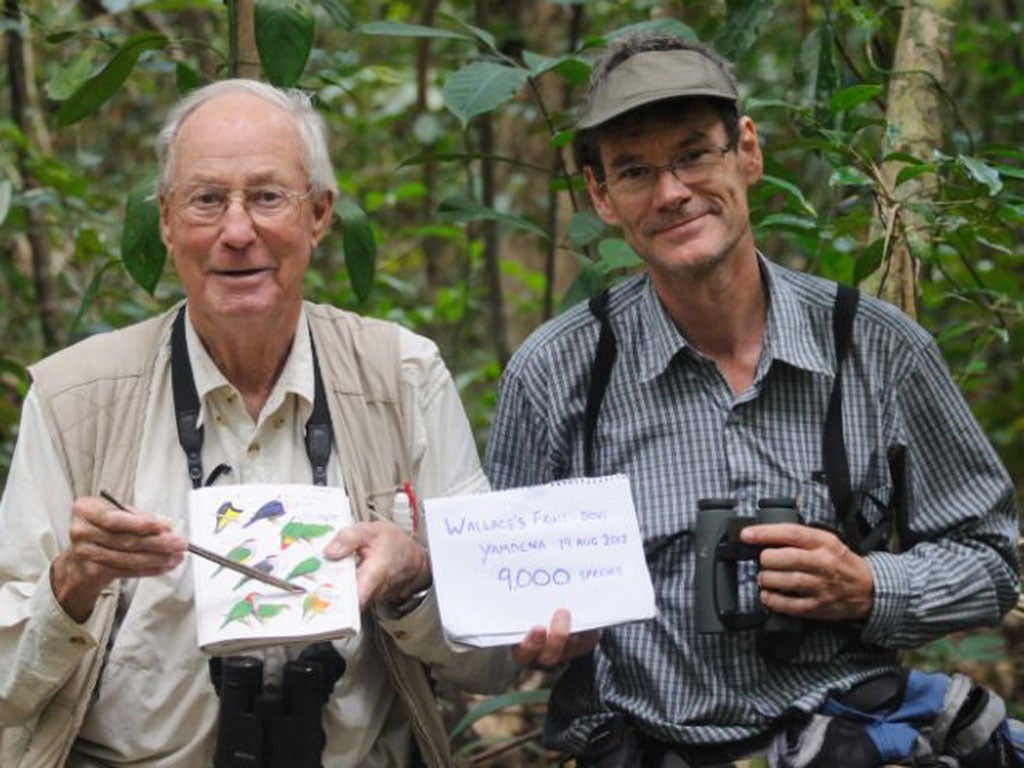British bird brain is the first to pass milestone

It took him until he was 81, but a veteran British birder has become the first person in the world officially to see 9,000 species.
Tom Gullick achieved the remarkable feat when he managed to see Wallace's fruit dove, Ptilinopus wallacii, on an expedition to Yamdena island in Indonesia.
This summer's sighting was the climax of a 40-year quest to see as many of the world's birds as possible, which began when the former naval officer left Britain in 1971 to become an expatriate birdwatching guide in Spain.
Mr Gullick is a "lister" rather than a "twitcher" – one of a group of dedicated birders who compile "life lists" of all the species they have seen. There are still 1,500 or so known species left for him to see, but speaking from his home near the town of Los Infantes in the Spanish province of Ciudad Real, Mr Gullick said he did not intend to try for the next big milestone of 10,000.
"Enough is enough," he said, laughing. But he said he was elated to have become the first person to break the 9,000-species barrier. "I'd been trying hard to get there over the years."
In the process of seeing more birds than any other person before him, Mr Gullick encountered many of the world's most legendary species – avian prizes which most keen birders can only dream about.
Near his Spanish home he can regularly see one of the most impressive and most endangered birds of prey, the Spanish imperial eagle, but he has seen everything from the bee hummingbird of Cuba – the smallest bird in the world, tinier than your thumb – to the blue bird-of-paradise of New Guinea, often said to be the most beautiful.
He has seen the hyacinth macaw in Brazil (the biggest and most stunning flying parrot) and the Gurney's pitta in Thailand, not only one of the world's most brilliantly coloured birds, but also one of its rarest. Mr Gullick was one of a small group of birders who in 1991 rediscovered a bird believed extinct – the Sao Tome grosbeak, a red finch from the island nation of Sao Tome and Principe.
His obsession began with the wartime evacuation of Mr Gullick's school to North Wales when he was eight. "I began by collecting birds' eggs," he said. "I can remember climbing up an old apple tree to find a hawfinch's nest, and swinging on a rope to take an egg out of the nest of a raven."
In being the first to break the 9,000 barrier Mr Gullick is elevated to a pinnacle of birding fame previously occupied by the "big lister" who first topped 8,000 – Phoebe Snetsinger, a middle-aged American woman who took up serious birding when diagnosed with fatal cancer.
Join our commenting forum
Join thought-provoking conversations, follow other Independent readers and see their replies
Comments
Bookmark popover
Removed from bookmarks